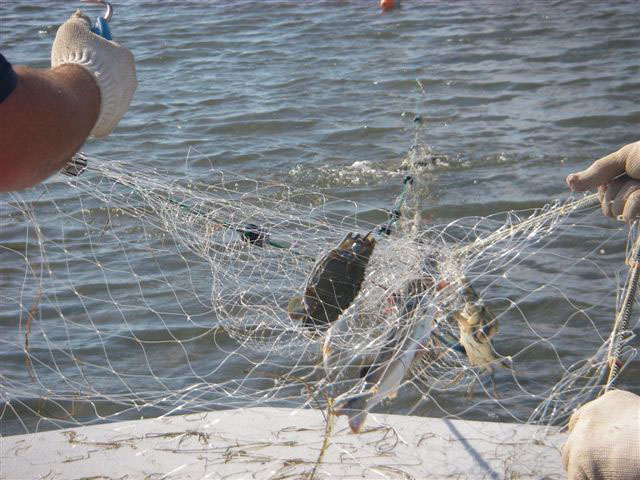Fish and Wildlife Technician

There is many a time that someone asks me, What do you do for a living? If I were to mention that I'm a mechanic or carpenter, they would know what my occupation is without further explanation. When I respond that I am a Fish & Wildlife Technician for the Texas Parks and Wildlife Department - Coastal Fisheries Division; they usually react with a blank look and, Oh, really?
To explain my job in one brief sentence is almost impossible because I do many things. One day I can be a boat captain, a long-liner and an outboard motor mechanic, while on another day you might find me repairing gill nets, building oyster dredges, painting boats, or doing a boat ramp survey. I also am a data editor, mentor, teacher and someday maybe even a biologist.
The best part is I never know what the day will bring, and there are so many challenges and so much diversity that I can never be bored. Usually we start the week on Monday with a staff meeting to discuss the various upcoming activities. As a group the technicians help plan out the work week. We might do a bag seine survey by skiff or make a trip on our 36-foot research vessel, the RV Copano Bay.
Our monthly sampling schedule is divided into two halves with sampling and data collection kept separate in the first half of each month (1st-15th) and second half of the month (16th to end of month). Every month we conduct twenty shrimp trawl and twenty oyster dredge samples with the RV throughout the Aransas/Copano bay system. Some sampling days take as much as 10 hours on the water. Twenty bag seines for monitoring smaller species and juveniles of other species are also collected on a monthly schedule. During a ten-week period each spring and fall we set and pick up forty-five gill nets for monitoring adult finfish. These sampling gears provide us information on species diversity, size, and relative abundance. Each sample must be sorted by species, counted and measured. Amazingly, we have never missed collecting any of our gear samples in all the months we have been at it.
Live fish from our sampling gears are returned to the water as quickly as possible. Dead fish from our trawls, bag seines and gill nets samples are saved as food for animals at the Animal Rehabilitation Keep (the ARK), an animal rescue center in Port Aransas. Fresh dead fish large enough for people to eat are donated to charity.
Another part of my duties are creel surveys. During creel surveys we interview boaters and fishermen returning to boat ramps at the end of their fishing trip. Some of the data we gather includes species caught, size, and fishing effort. Along with the data from our other sampling gears, we can get ideas on fish population trends and better recommend management options.
Creel surveys are conducted from 10:00 a.m. to 6:00 p.m. and can be hazardous in the summer months. You can expect HOT days, slippery ramps, sharp spines, fish slime, getting in and out of a rolling boat, and sometimes dealing with impatient anglers. At sixty-two years of age, that can be quite challenging!
During the summer months we enjoy the privilege of working with summer interns, usually a college student studying marine biology. Under our guidance, we teach these future biologists the fine art of fisheries management. It can be quite intense and hard work, but the experience gained will be valuable in their future careers.
Data entry is another aspect of my job duties. All the information collected from the field is recorded on data sheets and reviewed multiple times to ensure the accuracy before it is entered into the computer database. We have been gathering this type of sampling information for over thirty-five years and our data are so useful that other agencies and universities use it for their own research.
Texas Parks and Wildlife Coastal Fisheries Division is considered by many to be the best in the nation for sound management of natural resources, and in no small part due to the dedication of our employees. The Fish and Wildlife Technicians play a large part in that management picture.


